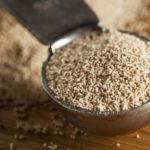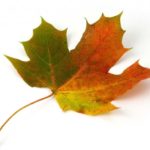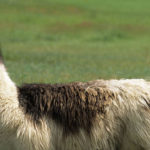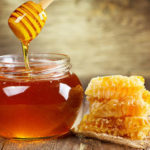Interesting facts about whiskey
 Whiskey is a drink made from only three components – grain, water, yeast. The most famous Scottish whiskey has an even more specific composition – barley, water, yeast. No flavors or other additives are added to whiskey, with one exception.
Whiskey is a drink made from only three components – grain, water, yeast. The most famous Scottish whiskey has an even more specific composition – barley, water, yeast. No flavors or other additives are added to whiskey, with one exception.
This exception is caramel. A few words about this. The addition of caramel is allowed in very small quantities, in order to maintain the color constancy of a particular whiskey. Most producers of single malt whiskey does not use caramel at all, striving for the naturalness of their product.
So, there are only three components. How is such a variety of whiskey tastes born? Why is there a whiskey with the taste of honey and dried fruits, sea salt and tar, weed grass and fortified wine, candies and ripe fruits? Why are there frankly mediocre drinks and gorgeous like ragweed? The fact is that each stage of the production of whiskey has its own effect on the final taste. Used barley and water, the nuances of the processes of malting, making wort, fermentation and distillation. Of course, excerpt.
It is unlikely that someone will give an exact answer to the question of what is the key to creating the most beautiful samples of this drink. Many tend to explain this solely by the specifics of production technology, the constancy and quality of the components used. Others, on the contrary, say that this is a kind of secret or magic, inaccessible to accurate miscalculation and born of nature, experience, traditions, skill of distillers and blenders. It seems to me that the uniqueness of whiskey is born at the junction of the art of masters and the sophistication of technology. When both of these components are truly at a high level, their resonance gives rise to truly brilliant drinks. Anyway, it’s worth visiting a real distillery in order to feel and understand that making whiskey, real malt whiskey, is not a routine industrial process, but the work of people who are loving in their work, where the desire for improvement is based on traditions and accumulated over centuries of experience.
Another indisputable advantage of whiskey is its versatility. In its various designs, it is absolutely appropriate at a noisy party, at a gala reception, and in a tourist flask. In various situations, he equally easily gives the charm of secular charm and a sense of genuine return to nature. Whiskey is truly multifaceted.
Over the years of love for this drink, he repeatedly surprised me with this. More than once it happened that the same whiskey, say not particularly impressed during a secular tasting, suddenly opened in some kind of trip or campaign. Or vice versa.
However, and this is especially worth emphasizing, whiskey, like no other, matches the area where it is produced. Believe me, that in the north, and especially in Scotland, he begins to play with some new colors. Where nature itself consists of the same components as the drink itself, it is once again transformed. And you understand its natural naturalness, that there is nothing alien or superfluous in it. And this is finally beginning to be appreciated in our world.
Whiskey is heather-covered hills, fresh green meadows, sweet honey, golden barley, and on the other hand, it is sea salt, seaweed drying on the shore after a storm, the smell of a fire, the aroma of water running from peat bogs. You will certainly feel that the associations born of the taste and aroma of whiskey are a reflection of those places where people who love their work produce this drink. It is not for nothing that the word Whiskey comes from the Celtic Uisge beatha, which is a Latin translation of Aqua vitae and means “water of life.” Whiskey is worth the name, it is the water of life, not only in the sense that moderate use of whiskey is extremely beneficial for a person, but also because it is a drink filled with life itself, the energy of nature and the people who gave life to this drink. However, it may be the same thing.



























